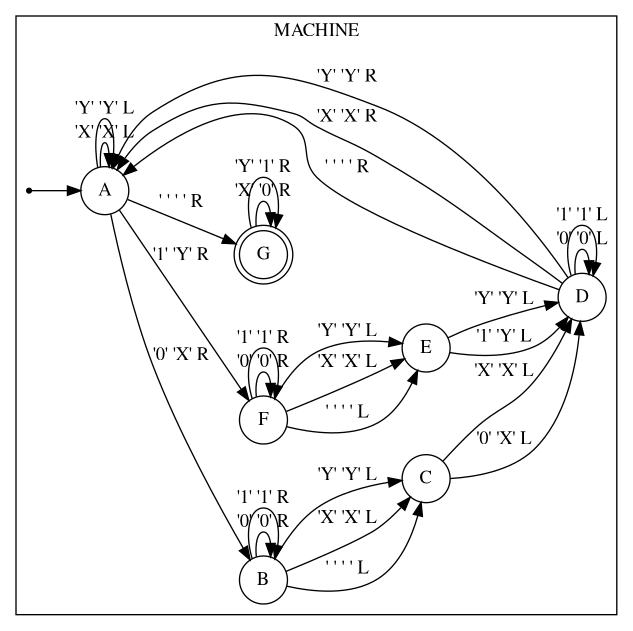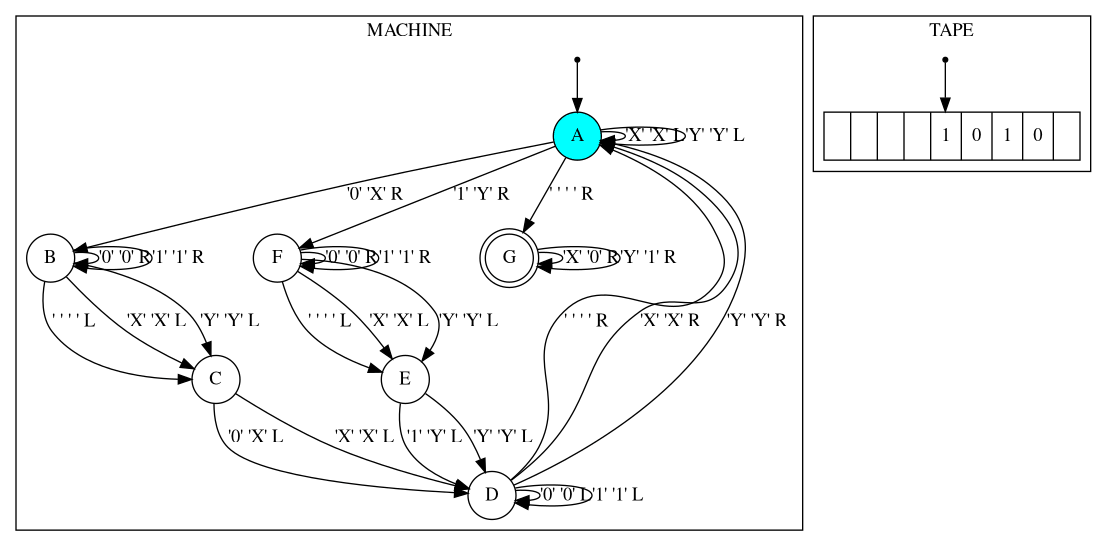
A programming language for designing Turing machines.


Walkthrough | Installation | Wiki | Citation
pip install alanThis section describes a workflow.
For an in-depth guide navigate to the Wiki. Here are some useful links:
Consider the following example, the definition for a Turing machine that accepts all binary strings that are palindromic:
# This is a definition of a Turing Machine that accepts binary strings that are palindromes
' '
A*
'X' 'X' < A
'Y' 'Y' < A
'0' 'X' > B
'1' 'Y' > F
' ' ' ' > G
B # Starting with 0
'0' '0' > B
'1' '1' > B
' ' ' ' < C
'X' 'X' < C
'Y' 'Y' < C
F # Starting with 1
'0' '0' > F
'1' '1' > F
' ' ' ' < E
'X' 'X' < E
'Y' 'Y' < E
C
'0' 'X' < D
'X' 'X' < D
E
'1' 'Y' < D
'Y' 'Y' < D
D
'0' '0' < D
'1' '1' < D
' ' ' ' > A
'X' 'X' > A
'Y' 'Y' > A
G.
'X' '0' > G
'Y' '1' > G
Graph the machine:
alan graph examples/binary-palindrome.aln -f assets/readme/binary-palindrome.pngRun the machine on some inputs:
-
alan run examples/binary-palindrome.aln 101
Accepted Initial Tape : 101 Final Tape : 10 -
alan run examples/binary-palindrome.aln 1010
Rejected Initial Tape : 1010 Final Tape : Y010
Animate the computation on some inputs:
-
alan run examples/binary-palindrome.aln 101 -a -f assets/readme/binary-palindrome-accepted.gif
-
alan run examples/binary-palindrome.aln 1010 -a -f assets/readme/binary-palindrome-rejected.gif
If you use this implementation in your work, please cite the following:
@misc{decosta2019alan,
author = {Kelvin DeCosta},
title = {Alan},
year = {2019},
howpublished = {\url{https://github.com/kelvindecosta/alan}},
}


